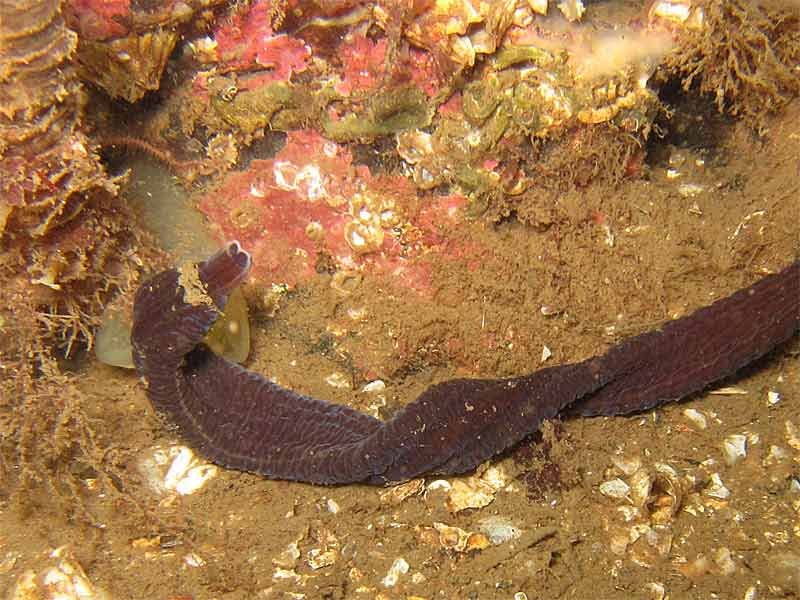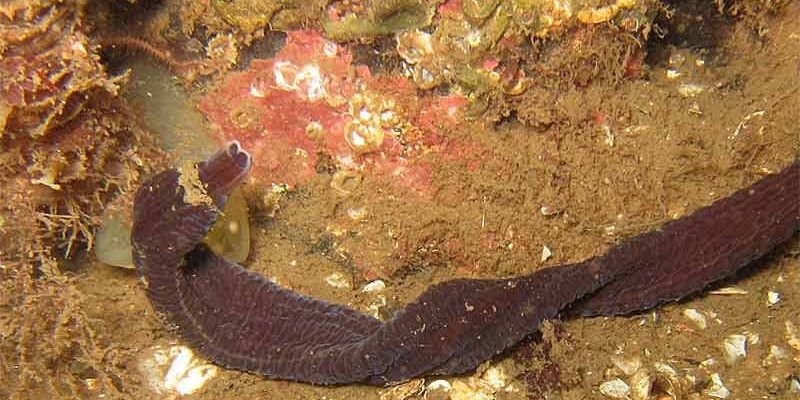
Bootlace worms, scientifically known as *Lineus longissimus*, are often found in shallow waters around the coasts of Europe and North America. They can stretch up to 180 feet long, making them one of the longest animals on the planet! But don’t let their size intimidate you; these worms are vital to marine ecosystems. They serve many functions, from aerating the seabed to providing food for other marine animals. Let’s dive deeper into the world of bootlace worms and explore their role in marine ecosystems.
What Exactly Are Bootlace Worms?
Bootlace worms belong to a group known as **nemerteans**, which are characterized by their elongated bodies and unique ability to stretch and contract. These worms are often mistaken for sea snakes due to their long, thin appearance, but they are completely different creatures.
These worms have a soft, flexible body that allows them to move through their environment with ease. Their skin is often a vibrant color, ranging from yellow to reddish-brown, which helps them blend into their surroundings. They typically inhabit areas with sand or mud, where they can burrow down to evade predators and hunt for food.
You might be wondering, how do they hunt? Bootlace worms are equipped with a unique feature called a **proboscis**. This long, tubular structure allows them to catch prey and consume tiny marine animals like crustaceans and other worms. It’s a bit like having a built-in straw for drinking, enabling them to suck in their meals.
Bootlace Worms and Sediment Aeration
One of the important roles bootlace worms play in marine ecosystems is **sediment aeration**. You can think of it like the worms are nature’s tillers, mixing up the soil to create a healthier environment. When bootlace worms burrow through the sediment, they help to loosen it, allowing oxygen to reach deeper layers of sand and mud.
This process is vital for the overall health of the marine environment. Many microorganisms and small creatures, like bacteria and zooplankton, also rely on oxygen to survive. By aerating the sediment, bootlace worms support a diverse range of life forms that contribute to the nutrient cycle in the ocean.
Healthy sediment also benefits larger marine animals, like fish and crustaceans, as it provides them with a richer habitat to thrive. The interplay between bootlace worms and sediment is a fantastic example of how even the smallest creatures can have a significant impact on their ecosystem.
Bootlace Worms as Prey
Bootlace worms don’t just impact the environment through aeration; they also serve as a food source for several marine animals. Think about it: in the vast ocean, everything is part of a food chain. Bootlace worms are no exception. Fish, birds, and even some larger invertebrates enjoy snacking on them.
As their populations fluctuate, bootlace worms help maintain the balance of marine life. If there are fewer worms, fish and other predators may struggle to find enough food. This interdependence highlights how every creature, no matter how small, holds a place in the intricate web of life in the ocean.
In this way, bootlace worms contribute to **biodiversity**. They create habitats for smaller species while offering sustenance for larger ones, playing a vital role in the stability of marine populations.
Bootlace Worms and Habitat Formation
Let’s take a moment to talk about how bootlace worms influence their habitats. These creatures don’t just occupy a space; they significantly shape it. As they move through the sediment, their burrowing creates channels that allow water to flow more freely. This movement is essential for bringing nutrients and oxygen to other organisms living in the same area.
You might think of bootlace worms as architects of their own environment. By digging and creating pathways, they help establish a diverse set of living conditions that can accommodate various marine life. This interaction encourages the growth of seagrasses and other underwater plants, which, in turn, provide shelter and breeding grounds for many marine species.
Furthermore, healthy habitats help support entire ecosystems, making bootlace worms an integral part of marine life. Their presence can indicate the overall health of the ecosystem, similar to how certain birds can tell us about the condition of the forests they inhabit.
Bootlace Worms and Climate Resilience
In the face of climate change, bootlace worms also play a role in enhancing marine ecosystem resilience. With rising ocean temperatures and changing water chemistry, marine environments face increasing stress. Bootlace worms help combat these issues through their sediment aeration and habitat-forming activities.
By maintaining healthy sediment structures, they allow ecosystems to withstand shifts in climate better. When sediment is well-aerated, it can store carbon more efficiently, helping to mitigate some effects of climate change.
In addition, these worms contribute to nutrient cycling, which is essential for plant life that absorbs carbon dioxide from the atmosphere. In this sense, bootlace worms are tiny heroes, working behind the scenes to help their ecosystems adapt to changing conditions.
Conservation and The Future of Bootlace Worms
Despite their importance, bootlace worms, like many marine species, face threats from human activity. Pollution, habitat destruction, and climate change all pose risks to their populations. It’s worth noting that protecting these little creatures can have a ripple effect throughout marine ecosystems.
Conservation efforts need to consider species like bootlace worms. By safeguarding their habitats, we can ensure that the intricate balance of life in the ocean continues to flourish. Simple actions like reducing plastic use, supporting sustainable fishing practices, and conserving coastal habitats can go a long way in protecting bootlace worms and the many species that depend on them.
As we raise awareness about the significance of bootlace worms, we can encourage more people to appreciate the often unseen heroes of our oceans. They may not be as glamorous as dolphins or as popular as corals, but their role in maintaining marine ecosystems is undeniable.
Bootlace worms may seem like an insignificant part of the ocean’s vast tapestry, but they play vital roles in marine ecosystems that deserve our attention. From aerating sediments and forming habitats to serving as prey for other animals and helping combat climate change, these long, slender creatures are remarkable in their own right.
By learning more about the role of bootlace worms, we can begin to appreciate the intricate relationships in our oceans. Protecting these worms is not just about saving one species; it’s about preserving the health and balance of marine ecosystems as a whole. So the next time you find yourself by the shore, take a moment to think about the bootlace worms working quietly beneath your feet—small but mighty guardians of the sea.

